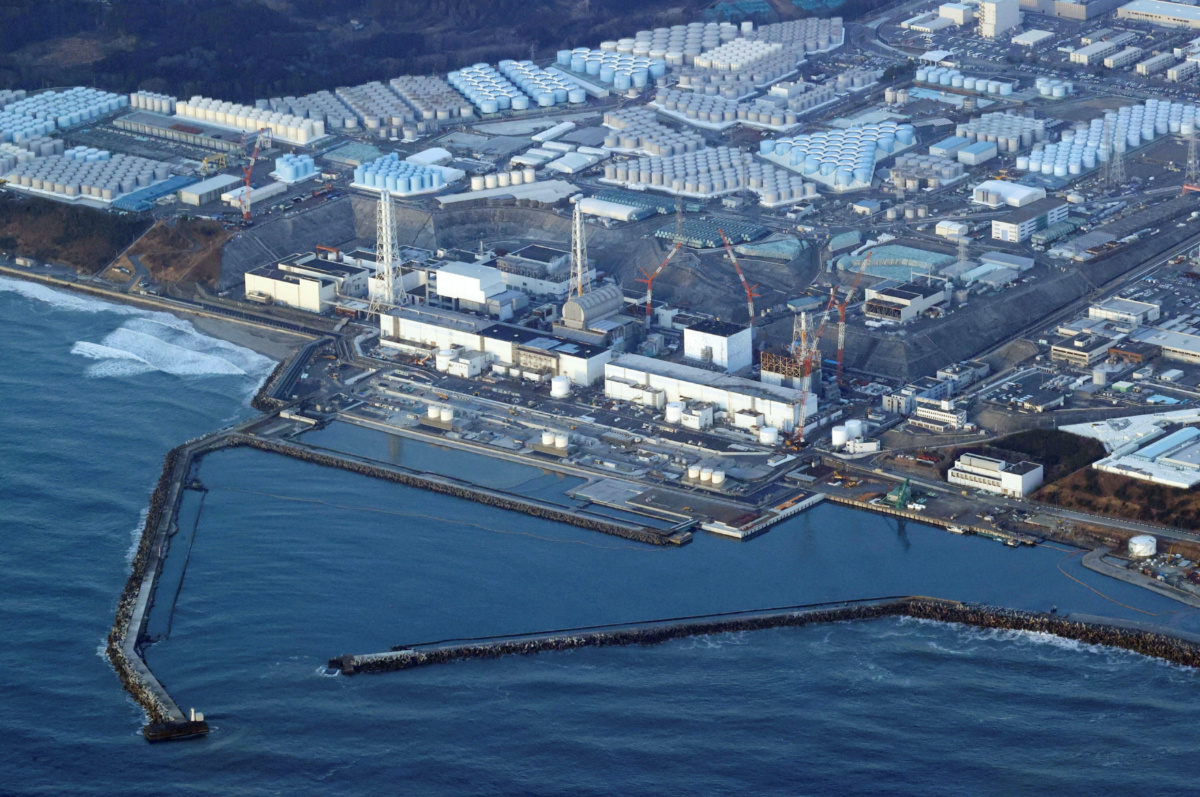Iwaki, Japan
Reuters
Waves crashing on a Japanese beach lashed a man and a woman wearing waders and hats as they demonstrated the use of a blue bucket to scoop some of the liquid into large plastic containers to be taken away and tested for radiation.
Members of a group that tracks such levels in food and seawater, they fear Japan’s plans to release treated radioactive water into the sea near the Fukushima nuclear plant could stir an anxiety among residents reminiscent of the 2011 disaster.

An aerial view shows the Fukushima Daiichi nuclear power plant following a strong earthquake, in Okuma town, Fukushima prefecture, Japan in this photo taken by Kyodo on 17th March, 2022. PICTURE: Kyodo/via REUTERS/File photo.
“The people of Fukushima endured the risks for the last 12 years and have confirmed the radiation level has dropped,” said Ai Kimura, director of non-profit group Mothers’ Radiation Lab Fukushima, also known as Tarachine.
“But if radioactive materials are released into the ocean now, it will again bring back the tragedy of 12 years ago,” she added, speaking at the lab in the city of Iwaki, 50 kilometre south of the power plant.
Japan is preparing this summer to start discharging into the Pacific more than a million tons of water from the tsunami-crippled power plant, but has not yet revealed the date.
Although the government and an international nuclear regulator say the plan is safe, it has alarmed neighbours, particularly China, and the regional fisheries industry.
Tarachine comprises 13 members – mostly mothers – who had no experience in radiology when they started, but were taught by scientists and doctors how to run tests and keep records.
After losing a job cooking school lunches in the wake of the disaster, Kimura joined the group in 2014 and taught herself how to measure radiation, in hopes of protecting her daughters, who were teenagers at the time, as well as others.
Now she says she wants more dialogue between the government and plant operator Tokyo Electric Power on one side, and citizens, fishermen and others on the other, to allay concerns over safety and other fears.
“Since the ocean has no walls…and what’s been released can’t be taken back, this issue is not only for Fukushima or for Japan to give consideration to, but for the whole world,” Kimura added.
Japan says the water has been filtered of most radioactive elements except tritium, an isotope of hydrogen that is hard to separate from water, but which will be diluted to well below internationally approved levels before the release.
Kimura’s group vowed to continue its activities after the release begins.
“We will keep on providing data, so that fathers and mothers can decide for themselves, and children can also decide, when they grow up, whether to eat Fukushima fish or whether to go swimming in the sea,” Kimura said.






